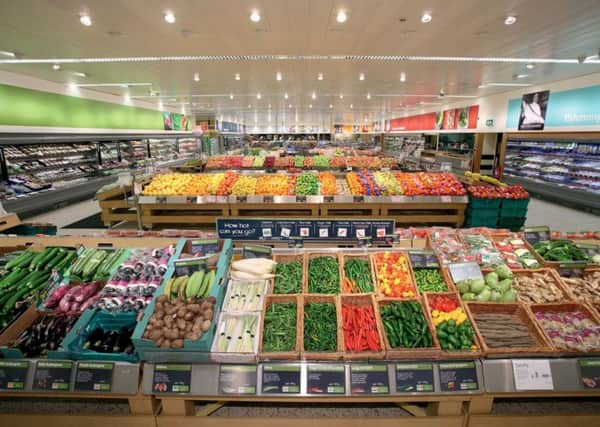Morrisons best performing of big four supermarkets


The latest grocery market share figures from Kantar Worldpanel, for the 12 weeks ending May 21, show that inflation continues to rise – up 2.9 per cent during the past 12 weeks – contributing to another period of growth for the sector.
But if inflation continues at its current rate it could add an extra £119 to the consumer’s grocery bill over the course of a year.
Advertisement
Hide AdAdvertisement
Hide AdOverall sales grew by 3.8 per cent year-on-year, the market’s best performance since September 2013.
Chris Hayward, consumer specialist at Kantar Worldpanel, said: “Once again all ten grocers have seen sales increase, no doubt boosted by higher prices as inflation continues.”
Bradford-based Morrisons not only delivered the best performance of the big four supermarkets, it also marked six consecutive periods of sales growth.
Its premium own label range ‘The Best’ has been key to the retailer’s success, with sales up by over a third on last year as nearly 800,000 additional shoppers chose products from the line during the past 12 weeks.
Advertisement
Hide AdAdvertisement
Hide AdLeeds-based Asda has also increased shopper numbers by over 360,000 in the past 12 weeks.
Mr Hayward said: “The big four have collectively grown by 1.6 per cent overall, while Aldi and Lidl together grew at their fastest rate since January 2015.
“With sales up 19.2 per cent year-on-year, the pair achieved a record market share of 12 per cent. 62 per cent of the UK population shopped in an Aldi or Lidl during the past 12 weeks, compared to just 58 per cent this time last year – that’s an additional 1.1 million households visiting either of these stores.
“Consumers are starting to feel the pinch as prices continue to rise, with the average household spending an additional £27 on groceries during the past 12 weeks. That may not seem like much, but if inflation continues at its current rate over the course of a year that would mean an extra £119 spent on groceries per household.”
Advertisement
Hide AdAdvertisement
Hide AdTesco increased sales by 1.8 per cent year-on-year, attracting over 250,000 additional shoppers during the past 12 weeks.
The supermarket, which is in the midst of a turnaround, was helped by promotions on barbecue foods as the weather gets warmer, sales of fresh meat grew well ahead of the market at 4.3 per cent vs. 0.9 per cent overall.
Sales increased by 1.7 per cent year-on-year for Sainsbury’s, fuelled by a strong performance both online and for the retailer’s Local convenience stores.
The rise in popularity of own label goods has been a key factor in the growth of the wider sector as all ten grocers saw their sales increase.
Advertisement
Hide AdAdvertisement
Hide AdMr Hayward said: “Own label is also a major source of growth for all of the retailers, with sales up an impressive 6 per cent year-on-year in contrast to branded products which grew by just 0.6 per cent during the same period.
“More broadly, a drive for health – perhaps after the excesses of Easter, when the nation consumed £325m worth of Easter eggs – has helped boost performance, with volume sales of mineral water up 7.4 per cent, eggs up by 5.1 per cent, fresh produce up 2.1 per cent and sugar down 5.6 per cent year on year as shoppers filled their baskets with healthier options.”
Prices have been rising since the 12 weeks to January 1, 2017, following a period of grocery price deflation which ran for 30 consecutive periods from September 2014 to December 2016